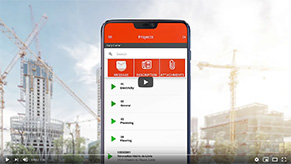
29 September, 2022
How to reduce costs in a construction project
How much do construction projects cost? In general, the price depends on several variables such as location, size, materials used,…

21 September, 2022
Technology in construction to watch in 2022
The technological landscape is evolving at a phenomenally fast pace. This is no different in the construction sector, as construction…

21 September, 2022
Use the free digital self-diagnosis tool of the ACQ
The digital self-diagnosis tool brought out by the Association de la Construction du Québec (ACQ) is a simple and intuitive…

21 September, 2022
How to make payroll easier
Managing payroll effectively is one of the main challenges faced by HR departments in any industry. Not only is the…

21 September, 2022
Why is sustainability important in construction?
With the global population expected to reach 9 billion by 2050, we need to address issues surrounding sustainable development. But,…

21 September, 2022
10 Tips for Mastering Time Management at Work
Having trouble keeping on top of all the things on your plate at work? We've all been there; we're human…





